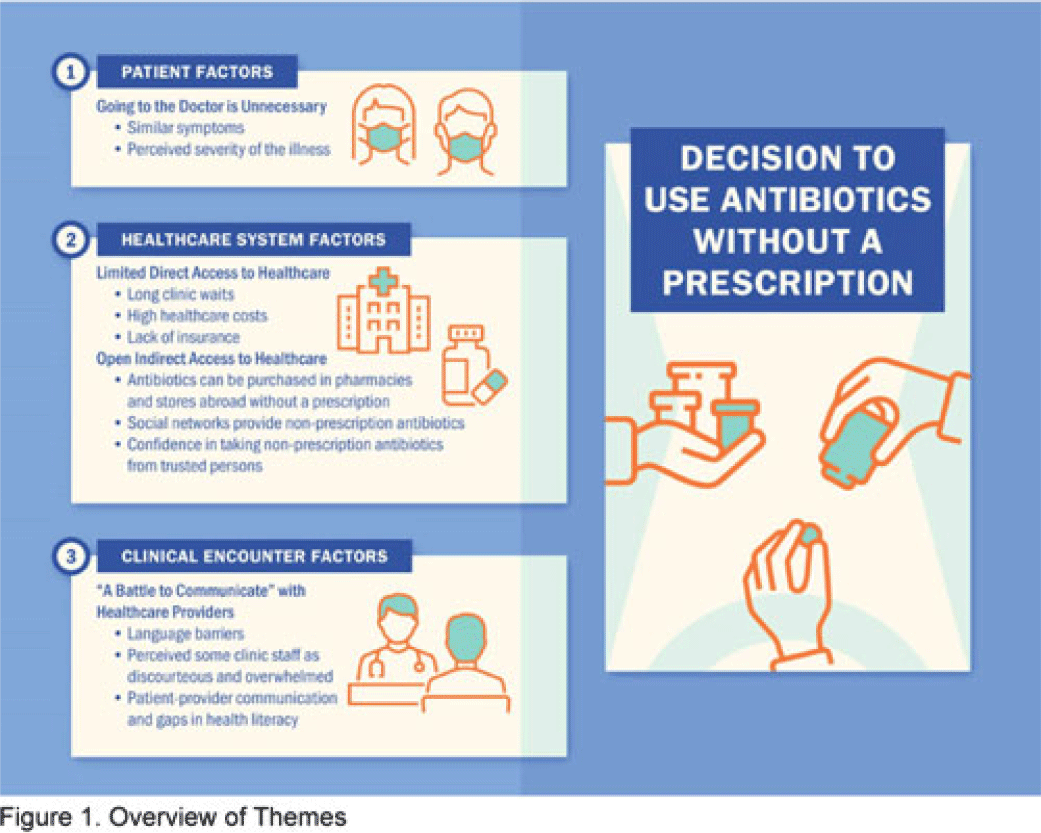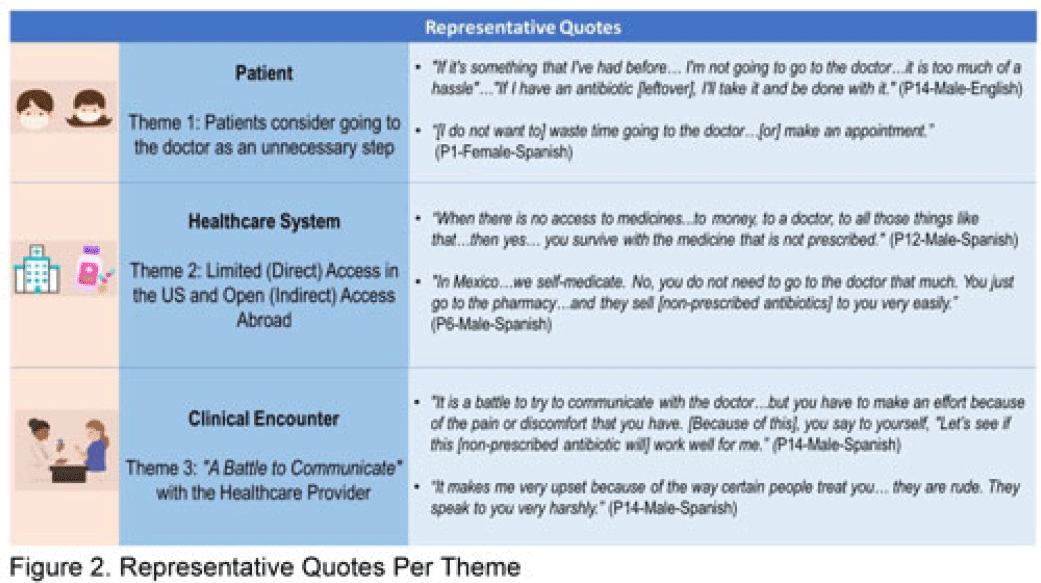322 results
Understanding older adults' travel behaviour and mobility needs during the COVID-19 pandemic through the lens of the hierarchy of travel needs: a systematic review
-
- Journal:
- Ageing & Society , First View
- Published online by Cambridge University Press:
- 02 May 2024, pp. 1-39
-
- Article
-
- You have access
- Open access
- HTML
- Export citation
Astrobiological applications of μ-mapping X-ray fluorescence spectrometry
-
- Journal:
- International Journal of Astrobiology / Volume 23 / 2024
- Published online by Cambridge University Press:
- 04 March 2024, e8
-
- Article
-
- You have access
- Open access
- HTML
- Export citation
Perspectives on nonprescription antibiotic use among Hispanic patients in the Houston metroplex: A qualitative study
-
- Journal:
- Antimicrobial Stewardship & Healthcare Epidemiology / Volume 3 / Issue S2 / June 2023
- Published online by Cambridge University Press:
- 29 September 2023, p. s20
-
- Article
-
- You have access
- Open access
- Export citation
The Parkes Pulsar Timing Array third data release
-
- Journal:
- Publications of the Astronomical Society of Australia / Volume 40 / 2023
- Published online by Cambridge University Press:
- 19 July 2023, e049
-
- Article
-
- You have access
- Open access
- HTML
- Export citation
Modeling the potential distribution of the threatened Grey-necked Picathartes Picathartes oreas across its entire range
-
- Journal:
- Bird Conservation International / Volume 33 / 2023
- Published online by Cambridge University Press:
- 15 June 2023, e65
-
- Article
- Export citation
The management of depression: the evidence speaks for itself
-
- Journal:
- The British Journal of Psychiatry / Volume 222 / Issue 3 / March 2023
- Published online by Cambridge University Press:
- 09 September 2022, pp. 97-99
- Print publication:
- March 2023
-
- Article
-
- You have access
- HTML
- Export citation
Air exchanges, climate change, and severe acute respiratory coronavirus virus 2 (SARS-CoV-2): Results from a survey of the Society of Healthcare Epidemiology of America Research Network (SRN)
-
- Journal:
- Antimicrobial Stewardship & Healthcare Epidemiology / Volume 2 / Issue 1 / 2022
- Published online by Cambridge University Press:
- 11 March 2022, e40
-
- Article
-
- You have access
- Open access
- HTML
- Export citation
The mental health of NHS staff during the COVID-19 pandemic: two-wave Scottish cohort study
-
- Journal:
- BJPsych Open / Volume 8 / Issue 1 / January 2022
- Published online by Cambridge University Press:
- 07 January 2022, e23
-
- Article
-
- You have access
- Open access
- HTML
- Export citation
Housing, sanitation and living conditions affecting SARS-CoV-2 prevention interventions in 54 African countries
-
- Journal:
- Epidemiology & Infection / Volume 149 / 2021
- Published online by Cambridge University Press:
- 23 July 2021, e183
-
- Article
-
- You have access
- Open access
- HTML
- Export citation
Development and validation of a non-remission risk prediction model in First Episode Psychosis: An analysis of two longitudinal studies
-
- Journal:
- BJPsych Open / Volume 7 / Issue S1 / June 2021
- Published online by Cambridge University Press:
- 18 June 2021, p. S36
-
- Article
-
- You have access
- Open access
- Export citation
33 - Digital Forensics: Repurposing Google Analytics IDs
-
-
- Book:
- The Data Journalism Handbook
- Published by:
- Amsterdam University Press
- Published online:
- 15 April 2021
- Print publication:
- 23 March 2021, pp 241-245
-
- Chapter
- Export citation
Gender and mental health service use in bipolar disorder: national cohort study
-
- Journal:
- BJPsych Open / Volume 6 / Issue 6 / November 2020
- Published online by Cambridge University Press:
- 06 November 2020, e138
-
- Article
-
- You have access
- Open access
- HTML
- Export citation
4235 The Use of Checklists Throughout the Lifecourse of a Clinical Research Study: The Rockefeller University Checklist Suite
-
- Journal:
- Journal of Clinical and Translational Science / Volume 4 / Issue s1 / June 2020
- Published online by Cambridge University Press:
- 29 July 2020, p. 69
-
- Article
-
- You have access
- Open access
- Export citation
Diverse vertebrate assemblage of the Kilmaluag Formation (Bathonian, Middle Jurassic) of Skye, Scotland
-
- Journal:
- Earth and Environmental Science Transactions of The Royal Society of Edinburgh / Volume 111 / Issue 3 / September 2020
- Published online by Cambridge University Press:
- 27 July 2020, pp. 135-156
- Print publication:
- September 2020
-
- Article
- Export citation
Cognitive side-effects of electroconvulsive therapy: what are they, how to monitor them and what to tell patients
-
- Journal:
- BJPsych Open / Volume 6 / Issue 3 / May 2020
- Published online by Cambridge University Press:
- 17 April 2020, e40
-
- Article
-
- You have access
- Open access
- HTML
- Export citation
Chapter 2 - The Intertidal Zone of the North-East Atlantic Region
-
-
- Book:
- Interactions in the Marine Benthos
- Published online:
- 07 September 2019
- Print publication:
- 29 August 2019, pp 7-46
-
- Chapter
- Export citation
The Comprehensive Assessment of Neurodegeneration and Dementia: Canadian Cohort Study
-
- Journal:
- Canadian Journal of Neurological Sciences / Volume 46 / Issue 5 / September 2019
- Published online by Cambridge University Press:
- 16 July 2019, pp. 499-511
-
- Article
-
- You have access
- Open access
- HTML
- Export citation
40 - Diagnostic Interviews for Assessment of Mental Disorders in Clinical Practice
- from Section 2 - Psychological Assessment
-
-
- Book:
- Cambridge Handbook of Psychology, Health and Medicine
- Published online:
- 05 June 2019
- Print publication:
- 16 May 2019, pp 179-183
-
- Chapter
- Export citation
Syndromic surveillance: two decades experience of sustainable systems – its people not just data!
-
- Journal:
- Epidemiology & Infection / Volume 147 / 2019
- Published online by Cambridge University Press:
- 22 February 2019, e101
-
- Article
-
- You have access
- Open access
- HTML
- Export citation
Defining a mood stabiliser: novel framework for research and clinical practice
-
- Journal:
- BJPsych Open / Volume 4 / Issue 4 / July 2018
- Published online by Cambridge University Press:
- 20 July 2018, pp. 278-281
-
- Article
-
- You have access
- Open access
- HTML
- Export citation






